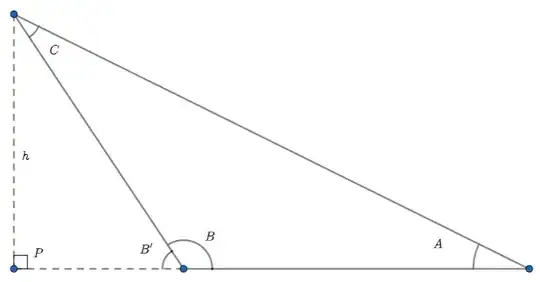I was doing a bunch of questions asking if certain inputs for sin would be periodic.
I am not asking for a proof that sin is periodic, I understand that sin is periodic, I am asking why geometrically speaking would a function that takes the angle and outputs the ratios between 2 sides of the triangle would be periodic?
it's obvious why it would be for x + 360, why would it be for 180-x? can't really draw right angle triangles with angles like 135 can we?
I have thought about the 180 - x thing for quite a while with no results, looking it up also got no relevant results
I have always thought about trignometry in terms of right angle triangles, maybe this is wrong.

P.S. The trigonometric functions can be defined using a general circle instead of a unit circle.
– ryang Nov 02 '21 at 08:08